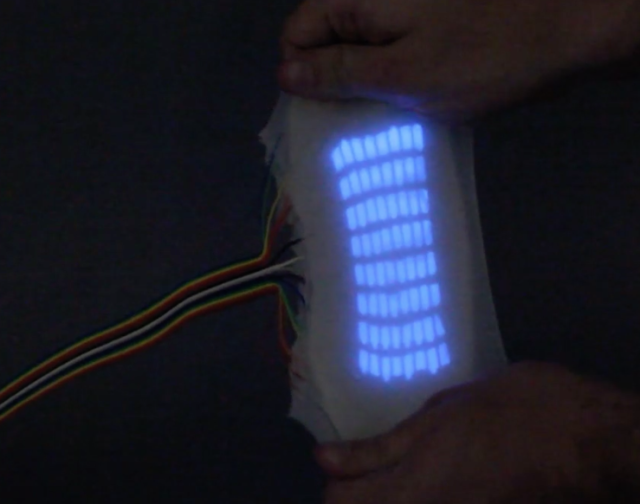Stretchable, glowing capacitors used to make a touch-sensitive robot
Ars Technica 2016-03-03

(credit: Larson, et. al., Science)
For many of us, the term "robot" still evokes an image of R2D2 or a terminator-style collection of metal parts. But there's no reason to limit our construction materials to hard parts. A number of labs are working on soft-bodied robots, and have shown they can do some rather interesting things, like squeezing through narrow spaces.
A team of researchers from Cornell and the Istituto Italiano di Tecnologia have taken a soft-bodied robot and made it glow. Their method of producing the light, however, has some interesting side effects: it allows the robot to determine how much it has flexed, and it makes the robot responsive to touch.
These days, "glow" is usually synonymous with "LED." But the authors used a very different technique, relying on what's called an electroluminescent phosphor—basically, something that glows when it's place in an alternating electric field. The phosphors (zinc sulfide, in this case) can be embedded in a silicone gel, making them stretchable and bendable. Different dopants in the phosphor will cause it to glow in different colors.